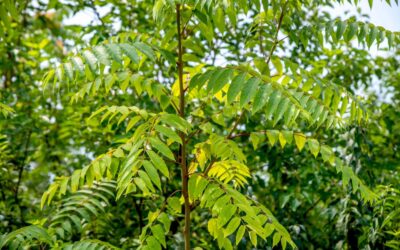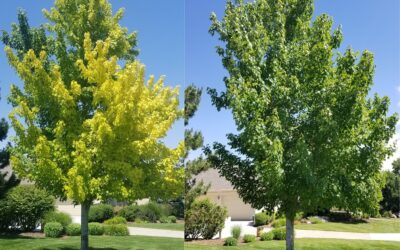If you’re looking for a small tree to accent your low-maintenance landscape, the mountain mahogany is an excellent choice. Native to Colorado’s rocky slopes, when mature, it has an attractive, twisted appearance that some liken to the African savanna.
Native Range
Mountain mahogany are native throughout the western United States from California to Kansas, north to Montana, and south to Texas and northern Mexico, where they grow in chaparral and semidesert habitats, often at high altitudes. There are three species of mountain mahogany common in Colorado, the alderleaf, littleleaf, and dwarf. They’re normally found on dry, rocky slopes among sagebrush, pinyon pine, and juniper growths.
Characteristics
The mountain mahogany isn’t a true mahogany tree, but rather a member of the rose family. It got its common name from the density of its wood—like mahogany, it doesn’t float. That density made it popular among native cultures for tools, but the short, twisted limbs make it unsuitable for use as lumber. Native people also used the bark for treatment of various ailments as well as for making a reddish dye.
All three species common to Colorado have reddish-brown bark and distinctive seeds with single long and twisted hairy tails. Mountain mahoganies are semi-evergreen, with thick, shiny dark green leaves that are dark on top with a fuzzy silver underside. Its nondescript white spring flowers are followed by feathery, silver-white fruits from May to November.
The leaves of the most common species, the alder-leaf mountain mahogany, are one inch long, elliptical, and have serrated edges. Its seeds are eaten by small mammals and birds that also use its shrubby growth for shelter and protection.
The small trees or shrubs can grow from 10 to 20 feet tall but usually stay about three feet high in naturalized areas due to heavy browsing by elk and deer, which also forage on the twigs.
The Mountain Mahogany as a Landscape Tree
The mountain mahogany is a tough small tree or shrub that thrives in poor conditions up to elevations of 10,000 feet. It’s adaptable to a wide range of climates from USDA zones 2-9. Its water need is very low and it prefers rocky soils that are well drained. It’s disease-resistant and low-maintenance, too, all of which make it an ideal plant for xeriscaping and in places where other trees are hard to grow.
If left alone by deer and elk, it will typically grow to around ten feet tall with a spread of 4-6 feet. Prune out dead branches and you can also prune to shape the plant when it’s young.
Mountain mahogany can also be planted in rows as a windbreak.
Donovan Arborists offers planting, and trimming services for mountain mahogany and other trees and shrubs as well as a complete landscape maintenance package for property in the Denver area.
We’re always happy to give free estimates to homeowners and property managers for any services they may need.



